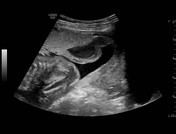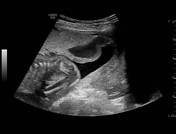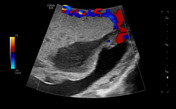Presentation
Routine. 22/40.
Patient Data
Age: 30 years
Gender: Female
From the case:
Placental lakes




Download
Info

Hypoechoic region within the placental surface without color Doppler fill. Cine loops demonstrates low-velocity flow within.
Case Discussion
Placental lakes are a common finding and during the second scan is not associated with any uteroplacental complication or with an adverse pregnancy outcome




 Unable to process the form. Check for errors and try again.
Unable to process the form. Check for errors and try again.